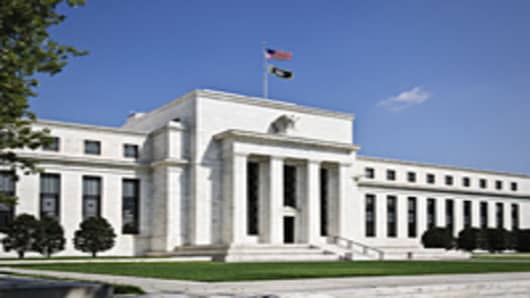A week of voluminous Fed speak has confirmed market suspicions that the Federal Open Market Committee has subtly shifted towards a more hawkish stance on additional easing.
Comments from nine of the 17 FOMC members this week did not, on balance, suggest any imminent shift from the current easy money policy.
But they did underscore the belief that began to take hold with the March monetary policy statement that the central bank, given the current forecast, is not planning a third round of quantitative easing .
Even more significantly, it may not even be planning to extend "Operation Twist," the Fed’s current program under which it sells short-term securities in its portfolio and buys longer-dated paper in order to try and drive down long-term rates. The program ends in June.
With the FOMC scheduled to meet in two weeks, the situation could yet change if incoming economic data takes a turn for the worse. But Fed Vice Chair Janet Yellen, who is among the more dovish central bankers, told an audience this week that she did not believe that ending Twist would constitute a tightening of policy.
Yellen’s comments, along with those of New York Fed President William Dudley, prompted Goldman Sachs to raise doubts about its call that another round of QE is on the way.
“For now we are sticking with our forecast that more QE will be announced in June, but we acknowledge that this will clearly require a meaningful deterioration in the data over the next two months, particularly in news on the labor market,” Goldman Chief economist Jan Hatzius wrote in a report.
Morgan Stanley, following the release of the minutes of the Fed’s March meeting last week, reduced its probability of QE3to one-third from two-thirds.
That is equal to what CNBC found in its Fed Survey, in which respondents reduced the probability of QE3 in the next 12 months to 33% from 48% in January.
There is one more chance for the Fed to change the outlook. Fed Chairman Ben Bernanke speaks for a second time this week at 1 p.m. ET Friday, but he is not expected to talk about monetary policy. He didn’t broach the topic at a speech earlier this week in Atlanta, suggesting he is either satisfied with the market’s current expectations for QE and the April meeting or that he is willing to let the committee find direction on its own.
Public comments suggest that direction won’t be towards additional easing. Dudley noted, for example, that more QE was not risk-free and could prompt inflation anxiety. Leading Fed officials took pains to ensure that the market did not mistake reluctance to ease further with a potential early end to its existing policies.
Yellen spent considerable time in a 20-page speech defending the current forecast to remain easy until late 2014 and emphasizing the amount of slack in the economy and the labor market. While Dudley noted some improvement in the labor market, he also highlighted risks to the economy from foreign economic weakness, and housing and the lackluster nature of the recovery.
Prior to the policy shift that markets began to notice in March, there was a higher probability placed on the possibility of additional QE even if the Fed’s forecast for moderate growth came to pass.
A group of policymakers, which at times seemed to include the chairman, seemed to suggest that the Fed needed to do more because, under almost any scenario, unemployment would remain high for an extended period. This group found it unacceptable that the Fed would miss its employment targets for such an extended period.
But somewhat better jobs numbers from December through February and first quarter GDP growth that now seems to be running around 2.5% combined to erode that rationale. Additional QE now seems reserved for a significant downward shift in the economy that could be brought on by a financial shock out of Europe or extreme tightening in Federal spending.
Among other significant comments this week, Atlanta Fed President Dennis Lockhart, seen as a centrist on policy, said he didn’t see the need right now for additional easing, though he wouldn’t take any policy options off the table. He said more QE would require a “dramatic” negative shock.
Hawks on the board seemed to be emboldened by the shift, with Minneapolis Fed President Narayana Kocherlakota suggesting that the Fed could be forced to tighten in the next six to nine months. However, the market has not been embraced that forecast as reflecting a consensus on the board.



